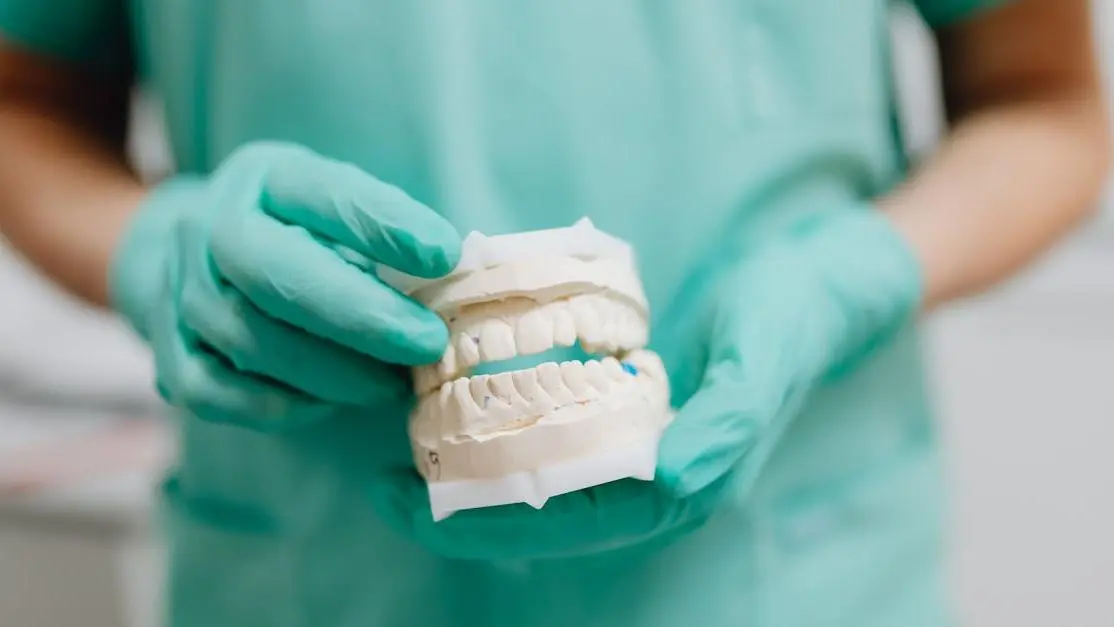Treatments for tooth decay have changed a lot—and your choices matter.
We see families and individuals across Cookstown, Bond Head, Alliston, Bradford, and nearby communities looking for proven ways to protect their smiles without stress.
This article breaks down 13 effective options, from preventive care to modern restorations, so you can make confident decisions about your dental health in a welcoming, personalized setting.
1. Professional Dental Cleanings
Routine dental cleanings are the backbone of preventing and managing tooth decay. Our hygienists don’t just scrape and polish—they protect your oral health by stopping decay before it snowballs into a bigger problem. If you want real control over cavities and gum disease, you need an expert in your corner.
Why Professional Cleanings Matter:
- Remove hard-to-reach plaque and tartar you miss at home. Results? Significantly lower bacteria, which lowers risk of dental emergencies.
- We spot early signs of decay—catching non-cavitated lesions that can be treated without drilling.
- Recommended at least twice annually for children and adults by the American Dental Association. Families who stay on schedule need fewer fillings.
- Deep cleanings go deeper, targeting gum inflammation and protecting against tooth loss.
- Regular care slashes your chances of needing urgent dental work, saving time, money, and stress.
Most tooth decay starts where toothbrushes rarely reach—by the time you feel pain, it’s already late in the game.
We see it every week. A simple visit can reveal issues early, often sparing patients from root canals or crowns. This is where lasting prevention starts.
2. Fluoride Treatments and Varnishes
Fluoride packs a punch against early-stage decay and helps your enamel repair itself. Our dental team delivers targeted fluoride precisely where you need it—for the youngest patients, adults at risk, or anyone with weak spots.
Benefits of Professional Fluoride
- Boosts enamel’s ability to resist acid attacks and strengthens tooth structure.
- Stops or even reverses microscopic decay before it turns into a cavity.
- Varnishes adhere longer, soaking in deeper and delivering up to 43% less risk for new cavities in children.
- Especially helpful for kids with braces, adults with receding gums, and patients with dry mouth.
Thousands of studies prove it works. We apply fluoride carefully, focusing on safety for all ages.
Who should get fluoride? Anyone with a history of decay, “white spots,” sensitive teeth, or orthodontic hardware.
Our results match the research: routine fluoride cuts emergencies and keeps smiles strong even between appointments.
3. Dental Sealants
Dental sealants are a fast, pain-free protective shield for your molars. These thin coatings fill grooves and pits that are too narrow for cleaning—blocking decay where it starts.
Sealants: The Facts
- Reduce cavity risk by up to 80% where they’re placed—especially effective for first and second molars.
- Sealants are recommended as soon as adult molars arrive, but adults with healthy, unrestored molars also benefit.
- They last for years with proper care and need no drilling or anesthesia.
- School programs have proven: kids without sealants get three times more cavities.
If your child dreads the dentist, sealants are quick and gentle. We use the latest materials for added fluoride release, providing extra protection without extra effort.
Prevention works best in the smallest spaces—sealants make a massive difference for Cookstown families.
4. Remineralization Therapies
Early decay can be reversed. Remineralization therapies use targeted pastes, gels, and professional products to restore minerals like calcium and phosphate to weakened tooth areas—no drilling, no shots.
Remineralization Rapid-Facts
- White spot lesions and sensitive teeth respond well, avoiding the need for fillers.
- Proven formulas (like CPP-ACP and hydroxyapatite) rebuild enamel structure and shield high-risk teeth.
- Used for children with braces, patients with medical conditions reducing saliva, and families wanting less invasive care.
- When paired with fluoride, remineralizing agents deliver the best results for early-stage decay.
If you spot new white spots or have ongoing sensitivity, ask us about advanced remineralization options. Many of our patients see results—and avoid fillings—by catching decay early.
Early action restores teeth, saving time and healthy tooth structure down the road.
5. Tooth-Colored Fillings (Composite Resin Restorations)
When decay does create a cavity, tooth-colored composite fillings restore teeth with natural appearance and strength. We use cutting-edge materials to match your tooth shade with precision, rebuilding only what’s damaged.
Composite Fillings: Why Families Choose Them
- Require less drilling than silver fillings, keeping more of your healthy tooth intact.
- Modern composites are strong, wear-resistant, and free of mercury.
- Ideal for front and back teeth—suitable for small to moderately sized cavities.
- Most last seven years or longer with proper hygiene and care.
Parents love that kids’ fillings blend in, and adults trust composites for both durability and discreet appearance. We sculpt each filling for a perfect fit, so your smile looks—and feels—natural.
6. Glass Ionomer and Other Specialty Fillings
Some patients need extra help to fight decay. Glass ionomer fillings release fluoride over time, giving ongoing antibacterial support. These materials bond well even to tricky surfaces, making them great for kids or high-risk teeth.
Specialty Options Matter
- Glass ionomer is best for non-chewing surfaces or as a base under other restorations.
- Resin-modified and bioactive materials add benefits for patients with frequent cavities.
- Ideal for children, root surfaces, or anyone dealing with dry mouth or medical issues.
Many pediatric cases at our clinic get glass ionomer for speed, comfort, and fluoride boost. These options help us manage decay more gently, especially for younger patients or those with underlying health needs.
Sometimes the secret to stopping cavities is a material that does more than just fill space.
7. Dental Crowns and Onlays
Severe decay or big, old fillings can leave teeth weak and vulnerable. Dental crowns and onlays act as custom-made armor, restoring strength and function—often saving teeth that would otherwise be lost.
Crowns come in ceramic, resin, gold, or porcelain options. We tailor the choice to each patient’s needs, considering appearance, bite, and long-term durability.
When to Consider Crowns or Onlays
- Teeth with large breaks or after extensive decay—crowns provide full coverage for years.
- Post-root canal teeth need crowns to prevent new cracks or infection.
- Onlays work for moderate decay by covering only the damaged area, preserving more natural tooth.
New technology lets us produce crowns and onlays faster, often in a single visit. Families appreciate the strength and life-like look, especially for visible teeth.
Teeth restored with crowns last longer and resist new decay far better than those with oversized fillings.
8. Root Canal Therapy
Deep decay hurts—and when the infection reaches your tooth’s nerve, time matters. Root canal therapy steps in to save the tooth, stop pain, and prevent serious infection. We’re committed to pain-free, stress-free root canals using the latest technology.
What does that mean for you? We numb the tooth fully (with no traditional syringes), quickly remove infection, clean the canal, and seal it for long-term health. Most patients are surprised at how easy it feels.
When You Need a Root Canal
- Persistent pain, swelling, or heat/cold sensitivity that lingers.
- Deep cavities on back teeth where extraction risks losing chewing function.
- Teeth with large fractures but good remaining bone support.
Success rates hit over 90%. We use 3D imaging and modern methods to finish most root canals in only one or two visits—so you get relief and keep your smile.
Saving your tooth is possible—even when it hurts—if you act fast and get expert care.
9. Minimally Invasive and Selective Caries Removal
No one enjoys drilling. You don’t have to settle for it. We practice selective caries removal: targeting only the truly decayed areas, sparing the rest of your healthy tooth.
Our tools include air abrasion, lasers, and precise hand techniques. This approach lowers discomfort and usually avoids freezing, especially for kids or anxious adults. More natural tooth left means fewer complications and longer-lasting results.
Reasons to Choose Minimally Invasive Care
- Reduces the chance of hitting the nerve or causing future pain.
- Perfect for baby teeth and smaller cavities—fewer tears, less stress, greater cooperation.
- Heals faster, with less disruption to your daily routine.
Parents especially love that their children can often skip the needle and still leave decay behind.
10. Silver Diamine Fluoride Applications
Sometimes you need to stop decay fast—especially if your child (or elderly family member) can’t manage a filling right away. Silver diamine fluoride (SDF) is a quick, painless liquid that kills bacteria, freezes decay in its tracks, and buys time before further treatment.
It’s safe, simple, and effective. The only downside: it darkens the area treated. For many, though, that’s a small price for pain-free results.
Key Uses for SDF:
- Primary teeth with visible decay in kids not ready for fillings.
- Seniors with multiple root cavities or difficulty sitting through longer procedures.
- Community or school dental days, providing rapid protection right away.
When traditional treatment isn’t an option yet, SDF keeps teeth functional and protected.
Effective solutions sometimes come in a single, simple drop—especially for special circumstances.
11. Diet and Nutritional Counseling
Your diet is the foundation of your family’s oral health. Sugary drinks and snacks feed the bacteria causing decay. We don’t just treat teeth—we help you build habits that fight cavities at the source.
Steps to Healthier Teeth
- Switch to water or xylitol gum for hydration and saliva flow.
- Choose high-calcium foods for re-mineralization power.
- Cut sugar frequency, not just overall amount; snacking all day puts teeth at constant risk.
- Read labels carefully to spot hidden sugars.
We tailor advice for your culture, lifestyle, and specific needs. Many families see fewer cavities in just months after small changes.
Small shifts in habits save families hours and dollars at the dentist.
12. At-Home Preventive Products and Enhanced Oral Hygiene
Daily habits matter more than any single treatment. We teach families how to step up their routines using proven products and clear, simple techniques.
Must-Have Tools for Home
- Fluoride toothpaste, twice a day. This step alone reduces decay more than any other.
- Electric toothbrushes and water flossers—extra help for tricky spots and braces.
- Interdental brushes or specialized floss for between teeth.
We guide you in building brushing routines for your family—before breakfast and after the last snack. New tech toothbrushes now offer reminders and feedback, making it easier to stay on track.
13. Natural Solutions and Adjunctive Therapies
Curious about oil pulling or herbal rinses? We believe in adding value—not hype. Some natural options (like xylitol gum or certain gentle rinses) do help, but never skip professional care.
If you want to add these approaches, talk to us. We make sure they fit with your treatment plan and keep your unique smile healthy.
Nature sometimes helps—but smart prevention and expert care do the heavy lifting.
How Tooth Decay Develops and Why Early Intervention Matters
Tooth decay doesn't heal by itself. The process is a cycle: bacteria use sugars to produce acid, which removes minerals from teeth. Without action, these “white spots” turn to cavities, infections, even tooth loss.
Common mistakes? Thinking no pain means no decay, or that baby teeth don’t matter. Many cavities start quietly. We use laser tools and digital x-rays to catch issues while they’re still reversible.
Need-to-Know Early Signs:
- Spots that look chalky, brown, or gray.
- Sensitivity to sweets or cold.
- Floss catching, or roughness you can feel with your tongue.
If you spot these, don’t wait. Prompt care keeps options simple and less invasive.
Decay left untreated can mean infection or serious illness—especially in kids or seniors.
Conclusion
Tooth decay is treatable at every stage. Families in Cookstown and nearby towns trust us because we offer comfort-first, science-backed care tailored to every age and need. You have more options—and more control—than ever before. Take action today to enjoy a healthier, pain-free smile tomorrow.

